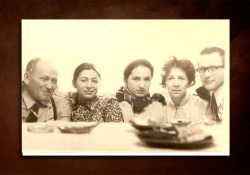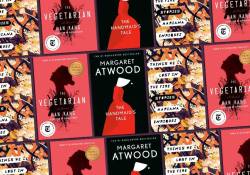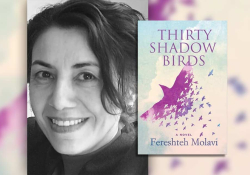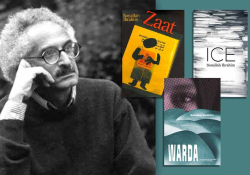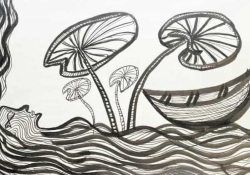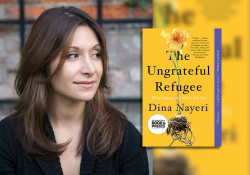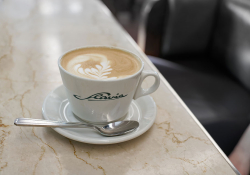How to Care for Our Longest-Living Forced Migrants
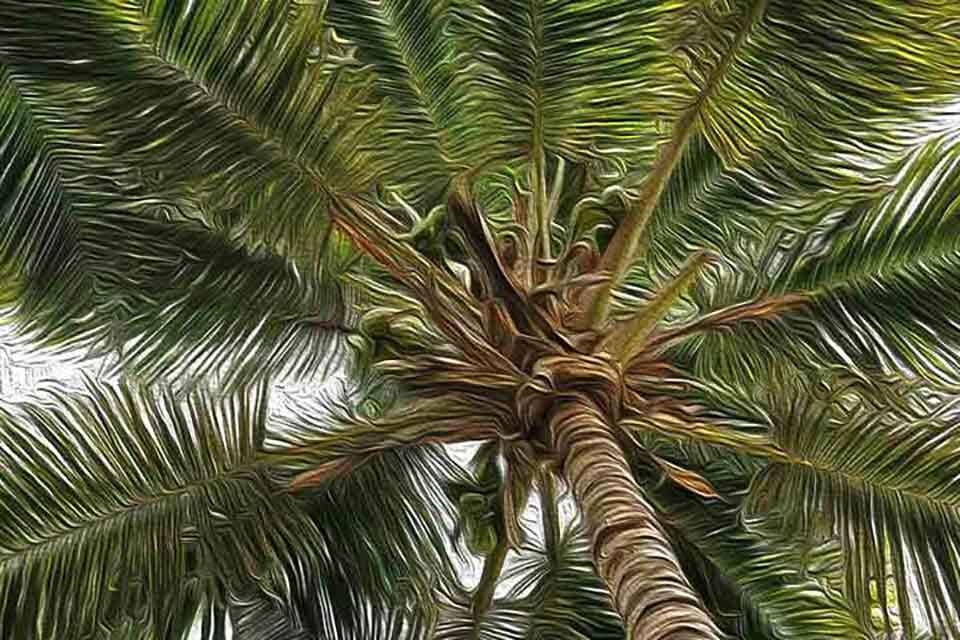
Olga Zilberbourg discovers the flora of the United States Botanic Garden—the oldest living forced migrants to the US—and a Russian writer, Vsevold Garshin, who wrote a story about a captive palm. Reflecting on each, Zilberbourg discovers that our contemporary dilemma of how to ethically and sustainably build a future in a world shaped by brutal colonial conquests rhymes with the revolutionary thoughts Garshin attributed to his palm tree in 1879.
Shortly after Donald Trump’s reelection and before his inauguration, writer Lillian Howan told me that she was putting aside her other projects to travel to Washington, DC, to visit the United States Botanic Garden where the plants collected by the United States Exploring Expedition (1838–42) were kept. Howan, whose roots are in Tahiti, was finishing her second novel set in the Hakka Chinese community in Tahiti and California, and, researching a new story, she wanted to see the cycad plants that had been uprooted from the Pacific islands and installed in Washington, DC, the oldest living forced migrants to this country.
A week after that conversation, writer Monya Baker shared with me a short story written in 1879 by Vsevold Garshin, “Attalea Princeps” or, in my translation, “A Captive Palm.” Monya, a science journalist as well as a fiction writer, had come across this story while studying Russian in the early 1990s and, more than three decades later, recalled it closely. I read the story and, instantly charmed, couldn’t help but notice that it mentioned cycad plants. Though they were not the main characters of Garshin’s story, he represented all tropical plants as Lillian had done: as captives in an alien world.
Garshin represented all tropical plants as Lillian had done: as captives in an alien world.
Garshin, a writer whose stories continue to be included in the grade-school curriculum in Russia, lived a short life, plagued by deep internal conflicts. His father traced their family roots to an old Tatar family, defeated by Russia’s Ivan III during the times of the Golden Horde. In Russia, the Garshins inherited the status of nobility—together with a severe psychological illness. Garshin’s two older brothers committed suicide at a young age, and so did he at the age of thirty-three. Garshin’s mother, Ekaterina, was involved in Russia’s revolutionary movement of the 1860s, eventually eloping with Garshin’s tutor, Petr Zavadsky, who was a member of a Kharkiv–Kyiv circle of socialist-democratic revolutionaries inspired by Aleksandr Herzen and Nikolay Ogarev to try to overturn the Russian Empire’s monarchy. Zavadsky was arrested on two separate occasions for his revolutionary activities, and Ekaterina eventually joined him in exile to Karelia. As is clear from Garshin’s story, the writer had deep reservations about the possibility of a successful revolution in Russia.
Reading this story today, its metaphorical meaning is almost too apparent and childish: the palm tree is so clearly a would-be revolutionary. Deciding to retranslate this story to English (a 1912 translation by Rowland Smith is freely available online), I was attracted less to the metaphoric significance of the botanical characters but rather to what the story has to tell us about the colonial history of botanical gardens themselves; the system of relationships between the plants and their caretakers; the relationship between the plants and what they perceive as their native lands. I was also fascinated by the longevity of the plants and by the longevity of ideas—our contemporary dilemma of how to ethically and sustainably build a future in a world shaped by brutal colonial conquests rhymes with the revolutionary thoughts Garshin is attributing to his palm tree in 1879.
Today, we might consider the history of botanical gardens as a part of the Western colonial project.
Today we might consider the history of botanical gardens as part of the Western colonial project. Emerging from the medicinal gardens of Renaissance Italy, the European version of botany developed as an independent branch of science on the heels of far-reaching expeditions of exploration and conquest. The first modern gardens emerged in Pisa, Padua, and Florence in 1544–45 and quickly expanded all across Spain, central and northern Europe, and England. The United States Botanic Garden was first established by an act of Congress in 1820, very late in the day, and nearly ceased to exist before the United States Exploring Expedition brought back, in 1848, a massive haul of plants and seeds they collected—often by armed force, killing many Indigenous people in the process—from the tropical regions of the Pacific Ocean. Four plants from that expedition still survive and are on display in Washington, DC: they are the ones that my friend Lillian Howan visited.
The St. Petersburg Botanical Garden, where I imagine the story is set—Garshin lived in St. Petersburg from the age of nine—was decreed by Peter the Great himself, the founder of St. Petersburg, and its current location dates back to 1713. Many of the tropical plants had been imported from other European collections, in particular, from England, Germany, Belgium, and the Netherlands; throughout the nineteenth century, the collection increased due to the Russian Empire’s own expeditions across the continent and the globe, from the Caspian Sea and Siberia to Africa, the Pacific, the Americas, and Alaska. In 1830 the garden acquired a large collection of Brazilian plants from a German botanist, Ludwig Riedel, who lived in Brazil and participated in an expedition across Brazil and to the Amazon organized by botanist and explorer Baron von Langsdorff, who also served as a Russian consul general in Brazil.
I suspect that Garshin’s characters, including the rebellious palm tree—resisting its scientific name Attalea princeps—were a part of that haul. A Brazilian writer, Marília Arnaud, and her English translator, Ilze Duarte, suggest that Attalea’s native name, originating in an Indigenous language, might be ouricuri. According to Arnaud, this palm grows in her area, the Northeast of Brazil, as well as in the Amazon, and bears fruit similar to small coconuts.
Given the longevity of the cycad plants, I imagine that the sago palm and the cycad mentioned in Garshin’s story are still there, in the conservatory on the Aptekarsky Island in St. Petersburg, perhaps bickering with one another about having to share space with new, upstart immigrant palms. In the original Russian, all the plants have grammatical genders that Garshin animates and uses for dramatic effect in the course of the story. In my translation, I decided to lean on the gender pronouns once the narrative enters the trees’ point of view, to better distinguish the human world from the world of the plants. To each other, the plants are fully animated and intelligent beings; the scientists don’t speak their language and choose to remain detached from their concerns.
Once I decided to translate the story, I messaged my childhood friend and a devotee of botanical gardens, translator Inna Zarochentseva, who graduated from the biology department of St. Petersburg State University. Like me, though she left Russia, she maintains close ties to her friends and former colleagues. Inna sent me an article dating from February 6, 2022. A short news item, it announces that one of the oldest palm trees in the St. Petersburg Botanical Garden was recently chopped down. By 2022 the palm reached twenty-two meters (seventy-two feet) in height, approaching the greenhouse ceiling, and its further growth was deemed potentially damaging to the building. The article added: “The botanists speak with regret about the need to cut down the palm. Planted in 1937, it survived the siege of Leningrad, and several generations of St. Petersburg botanists cared for it.”
The story of what it took to keep plants alive in World War II–era Leningrad, besieged for nine hundred days, while millions of people, including botanists, died of starvation, is a subject of the recent book The Forbidden Garden: The Botanists of Besieged Leningrad and Their Impossible Choice, by Simon Parkin (thank you to journalist Katherine Bourzac for this reference). Inna added that plants which survived the siege wore commemorative ribbons—the only appropriate use of such ribbons that today, when donned by humans, have come to signify nationalism and support for Russia’s war in Ukraine. And if, following Garshin, we afford this veteran palm tree a degree of agency, perhaps her death, too, was the result of a rebellion against human self-centeredness and a longing for freedom and blue sky.
Reading List
Marília Arnaud, The Book of Affects, trans. Ilze Duarte (Sundial House, 2024)
Lillian Howan, The Spellbound (WTAW Press, 2025) and The Charm Buyers (Latitude 20, 2017)
D. S. Mirsky, A History of Russian Literature (Knopf, 1927)
Simon Parkin, The Forbidden Garden: The Botanists of Besieged Leningrad and Their Impossible Choice (Scribner, 2024)
* * *
A Captive Palm (1879)
by Vsevold Garshin
translated by Olga Zilberbourg
In a botanical garden of a large city, there was a stately conservatory made from iron and glass. The building was a thing of beauty: slender, twisted columns held up the structure; upon them rested sleek ornamented arches, webbed together by iron frames enclosing panes of glass. The greenhouse looked particularly fine in the evenings, when the setting sun flooded it with red light and set it ablaze, bright reflections playing and shimmering as though within an enormous, finely polished gem.
Inside the thick glass stood the captive plants. As large as the building was, the plants were crowded. Their roots tangled in the struggle for moisture and nutrients. Tree branches collided with long palm fronds and bent and broke them, and themselves pushed against the metal frames and broke. The gardeners constantly trimmed the tree branches and tied the fronds with wire to tame their growth, but this only helped a little. The plants needed wide open spaces, their natural habitats, freedom.
Inside the thick glass stood the captive plants. As large as the building was, the plants were crowded. Their roots tangled in the struggle for moisture and nutrients.
They came from hot climes, tender, exquisite life forms; they remembered their native land and longed for it. A glass roof might let you see the sky, but it is not the blue sky itself.
Sometimes, in the winter, the windows frosted over, and then the conservatory became completely dark. The wind droned, blowing at the frames and rattling them. It piled snow drifts on the roof. The plants stood and listened to the howling of the wind and recalled a different kind of breeze—warm, humid, nourishing, life-affirming—and they wished to feel that touch, to feel that breeze swaying their branches, playing with their fronds. But inside the conservatory, the air was still, and only once in a while a winter storm broke a window, and a harsh, cold stream of air, full of ice, cut through the dome. Wherever that stream passed, the fronds paled, shrank, and wilted.
The windows were quickly fixed. The director of the botanical garden, a responsible, scholarly man, didn’t allow for any disorder, even though he spent most of his time behind a microscope set up in a special glass booth in the main gallery.
One palm tree grew taller and prettier than all the rest. The director, in his booth, called it in Latin, Attalea. But this name wasn’t its own: the name was invented by the botanists. The botanists didn’t know the name given to it at birth, and it wasn’t its own name that was written with coal on a white board nailed to its trunk.
Once a traveler from the same tropical country as the palm tree visited the garden; he smiled, looking at it, because it reminded him of home.
“Ah! I know this tree,” he said, and called her by her own name.
“Excuse me,” the director—he had been dissecting some kind of stem with a razor— called out from his booth. “You’re mistaken. The tree that you named doesn’t exist. This is Attalea princeps, from Brazil.”
“Sure. I believe you that the botanists named her Attalea, but she also has her native, authentic name.”
“Authentic names are the ones assigned by science,” the botanist said firmly, and locked the door to his booth, so that he wouldn’t be disturbed by people who didn’t have enough sense to listen and learn when a man of science chose to speak.
The Brazilian visitor lingered for a long time, and as he watched the palm, he grew increasingly sad. He recalled his homeland, its sun and sky, its abundant forests with inimitable animals and birds, its deserts, its magnificent southern nights. He remembered, too, that he had not been happy anywhere outside of his homeland, though he had traveled the world. He touched the palm with his hand, as though saying goodbye, and then left the garden, and the next day, boarded a steamship bound for home.
The palm remained. Unhappy before, now she was utterly miserable. She was completely alone. She towered ten meters above all the other plants, and these others didn’t like her; jealous, they considered her arrogant. The palm’s height brought her only grief; the others were a group, and she was alone, and besides, she remembered their native sky best of all, and longed for the blue the most, being nearest to what was given them as a replacement: the ugly glass roof. Through the roof, the palm could sometimes see something blue; and though foreign and pale, above was nevertheless the sky, the genuine blue sky. And so, when the plants chatted with one another, Attalea remained silent; aching with longing, she imagined standing beneath the sky, how lovely that would feel, even if the sky was so colorless.
The palm remained. Unhappy before, now she was utterly miserable. She was completely alone.
“Tell me, how soon will we be watered?” asked one female sago palm that loved a damp climate. “I might die of thirst today.”
“I’m surprised to hear this, neighbor,” a manly, plump cactus responded. “How can you complain about the buckets of water they pour over you every day? Look at me: they only give me a few drops, and I’m fresh and juicy.”
“I’m not used to pinching pennies,” the sago palm said. “I cannot grow on the same sandy and poor soil as some cacti. I won’t live like this! And, besides, please kindly keep your opinions to yourself.”
Offended, the sago palm stopped talking.
“As for me, I’m nearly satisfied with my situation,” a cinnamon plant spoke up. “True, it’s a bit boring here, but I can be sure that nobody plucks off my shoots.”
“But it’s not like every one of us was plucked off,” said a tree fern. “Of course, this prison might seem heavenly to those who never valued their freedom.”
The cinnamon plant, forgetting all about being harvested, took offense at this and began arguing. Some took her side, and others supported the tree fern; a fight broke out. If they could’ve moved, it would undoubtedly have come to fisticuffs.
“Why are you bickering?” Attalea said. “This won’t do you any good. It will only add anger and frustration to your misery. Stop fighting and think about what we could do. Listen: grow taller and wider, spread your branches, push against the frames and the glass; our greenhouse will crumble, and we will be free. If one branch gets too close to the glass, it’ll be cut off, obviously, but what can they do against a hundred strong and brave bodies? We have to join forces; that’s how we win.”
At first, nobody responded to this: they didn’t know what to say and stayed silent. Finally, the sago palm spoke up.
“That’s stupid,” she said.
“Ridiculous! Absurd!” all the trees spoke at once, trying to prove that Attalea’s idea was complete nonsense. “Impossible dream!” they shouted, “pathetic, inane! The frames are sturdy, and we’ll never break them, and even if we did, then what? The people will come with their axes and knives, they’ll hack off our limbs, they’ll fix the frames, and everything will be same as ever. The only thing we’ll achieve is they’ll cut out chunks from us . . .”
“As you wish,” Attalea said. “Now I know what to do. I will leave you alone: live as you please, bicker as much as you like, fight for the handouts of water, and stay forever under the glass dome. I will find my own way forward. I want to see the sky and the sun unobstructed by the bars and glass—and I’ll see it!”
And the palm proudly looked with her green top down to the forest of her comrades below. None of them dared to respond; only the sago palm quietly said something to its cycad neighbor:
“We’ll see, we’ll certainly see your large head cut off, so that you’ll know your place, big girl!”
The others, though they stayed silent, were angry at Attalea for her uncompromising words. Only one wisp of greenery didn’t get angry at the palm tree and wasn’t offended by her speech. This was the most pitiful and debased little plant of all the plants in the conservatory: a formless pale creeper with thick, drooping leaves. Completely unremarkable, she was only used in the conservatory to cover the naked earth. She wrapped herself around the foot of the large palm, and listened to Attalea, nodding along.
The creeper didn’t know what southern life was like, but she, too, liked air and freedom. For her, too, the conservatory was a prison. “If I, a lowly, limp creeper suffer so much without seeing my gray sky, pale sun, and cold rain, how must this beautiful, powerful tree feel in captivity?” The creeper thought this and tenderly hugged the palm tree and caressed her. “I wish I were a large tree. I would’ve listened to the good words. The palm and I would grow together and together would escape to freedom. Then, the rest of them would see that Attalea was right.”
But she wasn’t a large tree, only a low, weak creeper. She could only hug Attalea ever more affectionately and whisper words of love and wish her happiness in striving.
“Of course, our country isn’t as warm as where you came from, our sky isn’t as clear, the rains aren’t as profuse, but we do have the sky, the sun, and the wind. We don’t have such luscious plants as you and your comrades, endowed with such colossal leaves and magnificent flowers, but we do have very nice trees: pines, firs, birches. I’m a little creeper and I will never rise to freedom, but you are so great and strong. Your trunk is solid, and you don’t have far to go to the glass roof. You will crush it and live to see the light of day. Then you will tell me whether it’s as wonderful outside as it used to be. Your words would be good enough for me.”
“Why don’t you want to go outside with me, little creeper? My trunk is solid and sturdy; lean against it, work your way up. Your weight is nothing to me!”
“Ah no, it’s not for me. Look how weak and limp I am: I can’t even lift a single one of my branches. No, I’m not your equal. Grow and be happy! Though I beg you, when you rise to freedom, do remember your little friend once in a while.”
The palm started to grow. If before the visitors to the conservatory marveled at her colossal height, now she surged taller and taller by the month. The director of the conservatory attributed the tree’s rapid change in size to the quality of his care and took pride in the knowledge with which he managed the plants and the business of the greenhouse.
“Dear sirs and ladies, take a look at Attalea princeps,” he said. “Such magnificent specimens are a rarity even for Brazil. We applied all of our knowledge so that the plants would develop as freely in the artificial environment as in nature, and, I believe, we achieved some success.”
At this, he merrily rapped the firm tree trunk with his walking stick, and the blows resounded far across the conservatory. The palm’s fronds shook from these blows. Oh, if she could only cry! The director would hear a sound of anger he would never forget.
He imagines that I grow for his amusement, Attalea thought. Let him deceive himself.
She grew and grew, directing all of her fluids toward height, and draining her roots and fronds. Occasionally, she thought that the distance to the dome hadn’t changed. Then she gathered her full strength. The walls came nearer and nearer, and finally one young frond touched cold iron and glass.
“Look, look, how far she got,” the plants came astir. “Will she dare?”
“How terribly she’s grown,” the tree fern said.
“And what if she grew? So common. It’d be something if she could get as fat as I am,” a barrel-like cycad plant said. “What is she reaching for? She won’t accomplish anything. The bars are strong, and the glass is thick.”
Another month passed. Attalea rose. Finally, she butted tightly against the frame. There was nowhere else to grow. Then her trunk began to bend. Her leafy top crumpled; the cold rods of the frame dug into the tender young fronds, cut and mutilated them. But the tree was stubborn, she didn’t spare the leaves, and in spite of everything, pushed against the bars—and the bars, though made of robust iron, started to give in.
The little creeper watched the struggle, transfixed with concern.
“Tell me, aren’t you in pain? If the frames are so tough, perhaps it’s best to fall back?” she asked the palm.
“Pain? What does pain mean, when I wish to be free? Didn’t you encourage me earlier?”
“Yes, I encouraged you, but I didn’t know this would be so difficult. I’m sorry for you. You’re suffering so much.”
“Quiet, you, miserable grass! Don’t pity me. I will either be free or die.”
And that moment, there was a loud crack. A thick strip of iron burst. Pieces of glass fell clattering down. One of them hit the director’s hat as he was on his way out of the conservatory.
“What is this?” he yelped, shuddering, as he saw shards of glass flying every which way. He ran some distance and then turned around to look at the roof. Above the glass dome, the green crown of a palm tree proudly rose, righted to its full height.
“And that’s all?” thought the palm tree. “Is this all there is, all that I longed for and for which I suffered so much? This is what I had set as my highest goal to achieve?”
It was late fall when Attalea straightened her top above the opening she had forced. A drizzle mixed with snow was coming down; the wind drove in low, wispy, gray clouds. The palm tree felt like the clouds were enfolding her. Neighboring trees had already shed their leaves and stood naked, looking like hideous corpses. Only the pines and the firs kept their dark green needles. They looked at the palm tree morosely, as though saying, “You will freeze. You have no idea what frost is like. You don’t know how to bear it. Why did you leave your greenhouse?”
And Attalea understood: for her, the end had come. She was stiffening. Should she go back under the dome? But she couldn’t go back. She had to stand in the cold wind, to feel its gusts and the sharp strokes of the snowflakes, to look at the dirty sky, at the miserable weather, at the soiled backyard of the botanical garden, at the boring vast city visible through the fog, and wait until down there in the greenhouse humans decided what to do with it.
The director ordered the tree cut down. “We could cover it up with a special cupola,” he said, “but how long would that last? It will grow some more and break everything. And this will cost too much. Cut it down.”
They tied the palm tree with ropes so that it wouldn’t break the walls of the greenhouse as it fell, and then chopped it at a low spot, close to the roots. The little creeper that hugged the palm’s trunk didn’t want to part from its friend, and so, too, was sawed off. When they dragged the palm from the conservatory, remaining on top of the stump were some pieces of stems and leaves, maimed and pulped by the saw.
“Rip this chaff out and dispose of it,” the director ordered. “It’s yellowed already, and the saw damaged it. Plant something new in this spot.”
With one strike of the shovel, a gardener uprooted a whole bunch of the creeping grass. He tossed it into the basket and took it out to the backyard, throwing it right on top of the dead palm tree, lying in the dirt and already half-covered with snow.
Translation from the Russian

Vsevold Garshin (1855–1888), born near Bakhmut, today’s Donetsk oblast, studied at the St. Petersburg Mining Institute; later, he volunteered to fight in the Russian–Turkish War. In 1877 his first published short story catapulted him to national fame for its antiwar message. He published two volumes of short stories during his lifetime; a third was published posthumously.


